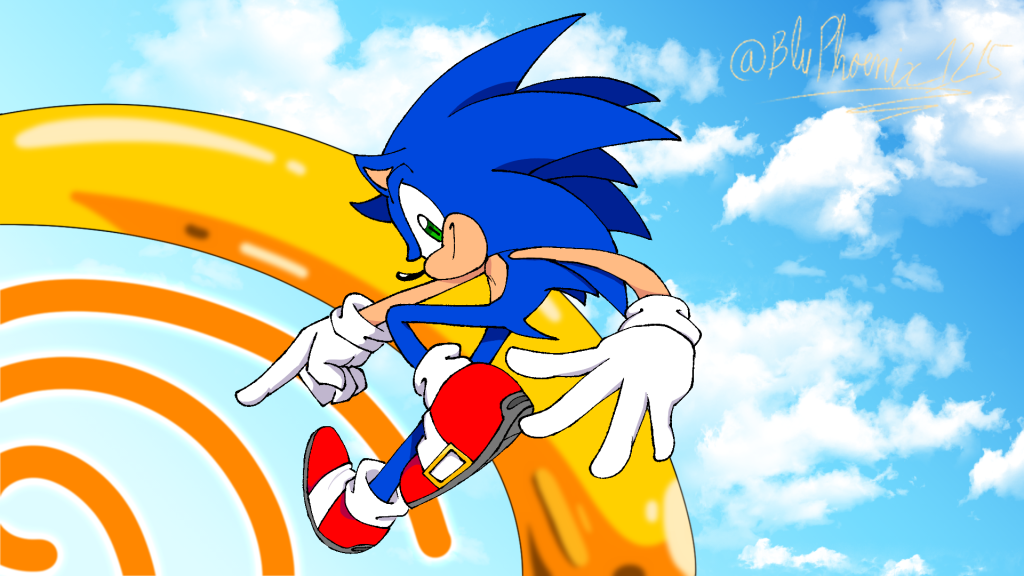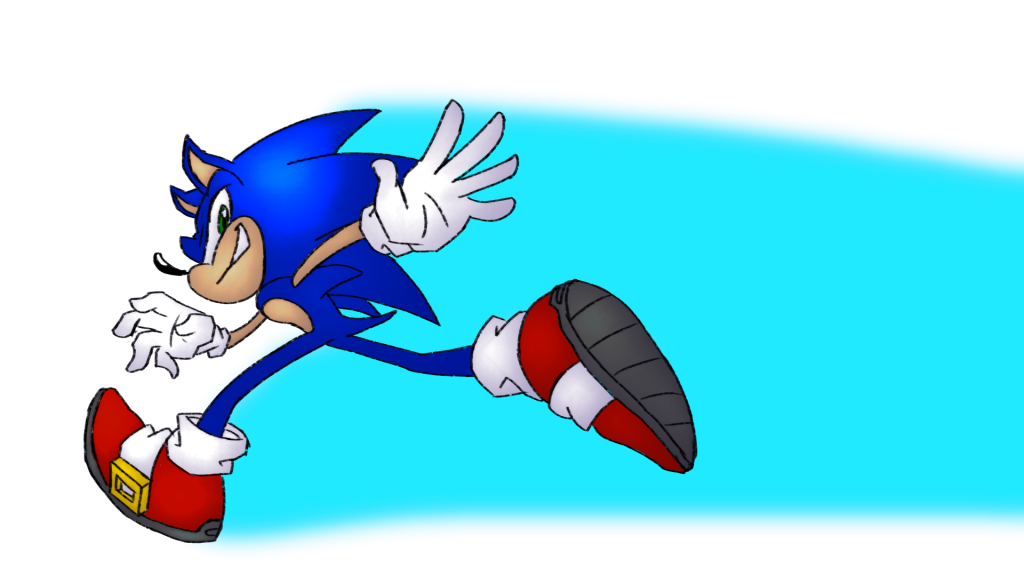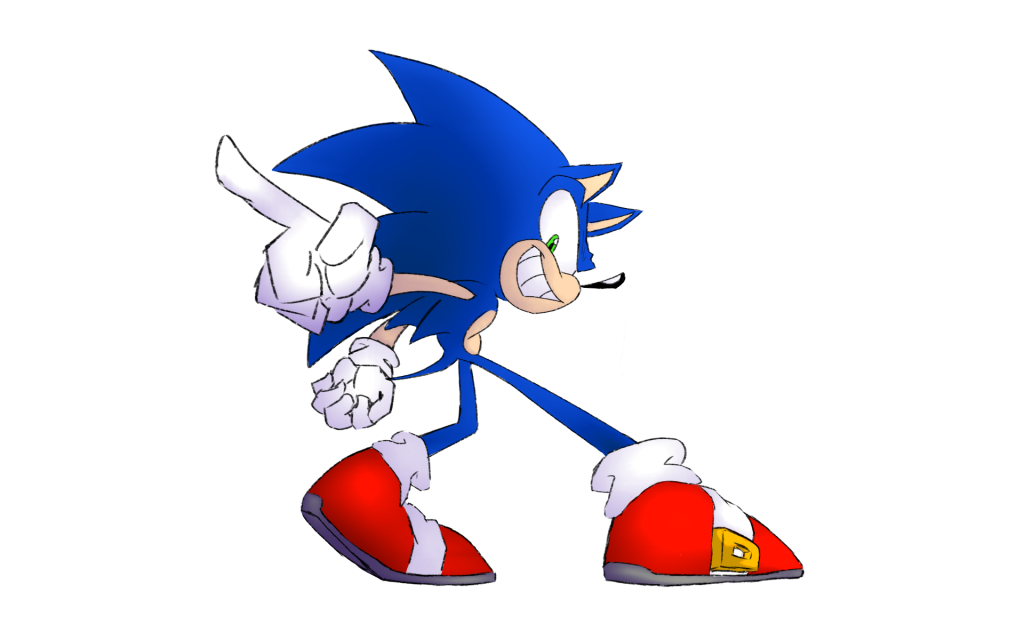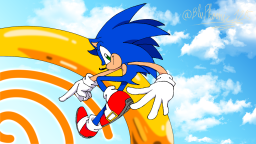
Introduction:
Sonic the Hedgehog is one of the most infamous platforming franchises in history, known for its lows rather than its highs. However Sonic has been making something of a comeback with the release of the 1st Sonic movie in 2020. Since then 2 more movies and games have been released and have been highly praised. But Sonic wasn’t always seen in a positive light. In fact Sonic used to be the laughing stock of the Video Game industry. Newer fans probably aren’t privy to this information though, since most new fans watched the movies and wanted to get into the games. That’s why the goal of this article is to recount the history of Sonic’s mainline games and their quality so that new fans can have a better understanding of his history and why his sudden rise to popularity is so significant. Here we go.

The Classic era:
Back in the 1990’s SEGA was looking to compete with Nintendo, probably the biggest publisher in the history of video games. To compete with the Super Nintendo Entertainment System they released the SEGA Genesis, and with it, their mascot’s first video game. Sonic the Hedgehog! Released in 1991, Sonic 1 was a smash hit and many teenagers gravitated more to Sonic because of his cool demeanor and rebellious attitude. Just looking at his design, you could tell he was made with the sole purpose of being the faster and way past cooler version of Mario. Just a year later Sonic the Hedgehog 2 would come out and blow the 1st game out of the water. Everything about this game was better, from the look of the game to the soundtrack to the focus on maintaining speed rather than just platforming. Not only that but there also came the feature of player 2 in the form of a companion to keep up with Sonic called Miles “Tails” Prower. The next year Sonic CD would be released for the SEGA CD, and add on for the SEGA Genesis. Sonic CD was a more platforming centered game that came with a fully 2d animated intro by Studio Junio and music that wasn’t limited by the Genesis’ sound system thanks to the revolutionary CD technology at the time. The game introduced 2 more fan favorite characters, Metal Sonic and Rosy the Rascal, later named Amy Rose. The final mainline game to release in the Classic Era was Sonic the Hedgehog 3 & Knuckles. Released in 1994, this game is considered to be the best game to come out of the classic era. The sprite art was the best it’s ever been and the music, some tracks being composed by Michael Jackson, was also amazing. Not only that, they also introduced yet another popular character, called Knuckles. Not to mention that the game was so big that Sonic team had to split it into 2 games: Sonic the Hedgehog 3 and Sonic & Knuckles. Because of this, Sonic team developed Lock On Technology for the cartridges so the game could be connected which made Sonic 3 & Knuckles. But after this game came out Sonic Team noticed a change in the industry. More games were moving to 3d which meant they had to innovate as well. Which leads us to…
The Dreamcast/Adventure Era
But first, how were they gonna make a 3d Sonic game? The SEGA Genesis couldn’t process 3d graphics at all, and the SEGA Saturn’s 3d processor was primitive at best. So SEGA made The Dreamcast, a far more capable console in the 3d department. Thus in 1998 they released Sonic Adventure for the SEGA Genesis. Because of the 3d graphics, that meant characters could be more detailed, so every single existing character was re-designed and the game added 5 new characters. Those being Big the Kat, Froggy, E-102 Gamma, Tikal, and Chaos. Sonic Adventure is considered to be the best 3d Sonic game to date, which is crazy to think about because it was their first outing into the world of 3d graphics, so 3 years later they made a follow up. In 2001 they released the fan favorite Sonic Adventure 2, debuting the second most popular character in the franchise: Shadow the Hedgehog. However, while the game is held in high regard, it was the first decisive game in the franchise with some fans loving it and others hating it. Sonic Adventure 2 would end up being the last Sonic game to be a console exclusive since SEGA became a third party developer due to the Dreamcast underperforming in sales. After that they released Sonic Heroes which wasn’t received all too well due to the slippery and clunky controls. This would mark the end of the Dreamcast era.
The “Dark Age”
The next mainline game would release in 2005. The game was named Shadow the Hedgehog which turned out to be a pretty huge stinker, being overly edgy, having poor controls, and having a poorly executed story. Afterwards they would release Sonic the Hedgehog (2006) which was an unfinished mess of a game with poor controls and a slew of bugs. The next year Sonic and the Secret Rings released for the Nintendo Wii. The game also had very clunky controls but had a good enough story that fans look back on the game fondly. In 2008 Sonic Team would release Sonic Unleashed, which was received poorly on release, with critics mostly complaining about one of the halves of the game: The Werehog. However today this game is considered to be one of the best Sonic games ever made, with people even starting to love the Werehog and its gameplay. In 2009 the final “Dark Age” game was released, being Sonic and the Black Knight for the Wii, while the controls were still a bit clunky, like Secret Rings, the story is considered to be the best in the franchise.
The Meta Era, the true Dark Ages
In 2010 the first game to release in this era was Sonic Colors for the Wii. While the game followed the formula on the regular stages of Sonic Unleashed, the story left a lot to be desired. The biggest complaint was that the game didn’t utilize its 3d levels enough, opting to make a majority of the levels play in 2d. The next year Sonic Generations released, bringing back the playstyle of the Classic Era in the form of a younger Sonic, and keeping the current playstyle of today’s Sonic. The game was widely praised for its controls and bringing back levels from the past. In 2013 Sonic Lost World released, it’s considered to have one of the worst stories in the franchise and the gameplay clearly reflects Mario Galaxy. Fans weren’t too happy about the lack of originality. In 2016 they would release Sonic Mania, a return to the series’ roots. Bringing back the pixelated art style and levels from the past. The game was received very positively. However the sequel Sonic Forces, releasing in 2017, nearly killed the franchise from its sheer mediocrity. With gameplay that can be beat by holding down a single button, and a terrible recreation of the Classic era’s gameplay. This is without mentioning the side games that fluctuate in quality just as much.
Present day, The Sonic Renaissance

With the release of the Sonic Movie in 2020 many new fans began flocking to the games, and with the release of Sonic Frontiers in 2022, which brought in more fans, The Sonic Renaissance began. Which brings us to now with Sonic 2 & 3 being 2 of the most beloved video game movie adaptations and Sonic X Shadow Generations, a re-release of Sonic Generations packaged with a brand new campaign featuring Shadow. After years of Sonic’s name being dragged through the mud, he’s earned his good name back and crossed over with IPs like Minecraft and DC. Our blue boy sure has come a long way, and with his popularity on the rise, the possibilities are endless.



